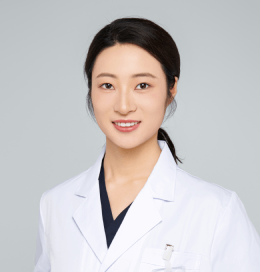
PERSONAL RESUME
Education
Sep 2020 – Jul 2023 Doctor of Medicine (MD)
in Surgery (Plastic
Surgery)
Peking Union Medical
College, Chinese Academy
of Medical Sciences
Sep 2017 – Jul 2020 Master of Medicine
(MMed) in Surgery
Peking Union Medical
College, Chinese Academy
of Medical Sciences
Sep 2010 – Jul 2015 Bachelor of Medicine
(BMed) in Clinical
Medicine
Nanjing Medical
University
Postdoctoral
Experience
Aug 2023 – Present Postdoctoral Fellow (In
Training)
Peking Union Medical
College Hospital,
Chinese Academy of
Medical Sciences
Major
Publications
(1) Yan Hao; Zhengyun Liang; Hao Liu; Mengjie Shan ; Yijun Xia ; Kexin Song ;
Youbin Wang ; A Nomogram with the Keloid Activity Assessment Scale for Predicting
the Recurrence of Chest Keloid after Surgery and Radiotherapy, Aesthetic Plastic
Surgery, 2022, 47:872-879
(2) Jingjia Zhang; Yan Hao; Zhi Wang; Qiwen Yang; Diagnosis of Coxiella burnetii
infection via metagenomic next-generation sequencing: a case report, BMC Infectious
Diseases, 2022, 22(1)
(3) Yan Hao ; Mengjie Shan ; Hao Liu ; Kexin Song ; Qiao Chen ; Tian Meng ; Cheng
Feng ; Zhi Wang ; Zheng Qi ; Yijun Xia ; Youbin Wang ; Clinical Observation of
Subepidermal Vascular Network Flaps in Keloid Patients, Aesthetic Plastic Surgery,
2022, 46 : 2015-2022
(4) Yan Hao ; Xinhang Dong; Hao Liu; Youbin Wang; Preconditioning with one-time
hydrogen gas does not attenuate skin flap ischemia-reperfusion injury in rat models,
Journal of Plastic, Reconstructive& Aesthetic Surgery, 2019, 72(10) :1661-1668
(5) Hao, Yan ; Shan, Mengjie ; Liu, Hao ; Xia, Yijun ; Kuang, Xinwen ; Song, Kexin ;
Wang, Youbin; Comparison of Predictive Models for Keloid Recurrence Based on
Machine Learning, Journal of Cosmetic Dermatology, 2025, 24(2)
Abstract submitted for the 5th International Keloid Symposium
Background: There are many different keloid treatment modalities. One surgical technique is to keep the ‘‘shell’’ of the keloid to
over the defect. We named this “shell” keloid subepidermal vascular network flap (KSVNF), and we outlined the characteristics of this flap by observing 35 flaps in keloid patients.
Methods: A total of 35 KSVNFs were designed in 15 patients during 2020-2021. All patients underwent the operation and adjuvant radiotherapy as well as hyperbaric oxygen therapy. All flap lengths and widths were recorded, and the blood perfusion of the flaps was measured on the first day postoperation and the day of stitch removal. Flap survival and the quality of flaps were evaluated on the day of stitch removal. All harvested data were analyzed using the R (version 4.0.1) package.
Results: The mean blood perfusion on the first day postoperation (pod1) and the day of stitch removal was 120.4013 and 168.6900, respectively (p = 0.02249); 2 flaps had partial necrosis (5.714%). Receiver operating characteristic (ROC) curve analysis showed that when the length/width ratio was less than 1.05, the quality of the flap was
good (AUC = 0.724), which suggests that the effective safe length/width ratio was 1.05.
Conclusion: KSVNF is an applicable method for covering the remaining wound after keloid mass removal with sufficient blood perfusion and adequate skin quality. We recommend that the length/width ratio of the flap design not exceed 1.

